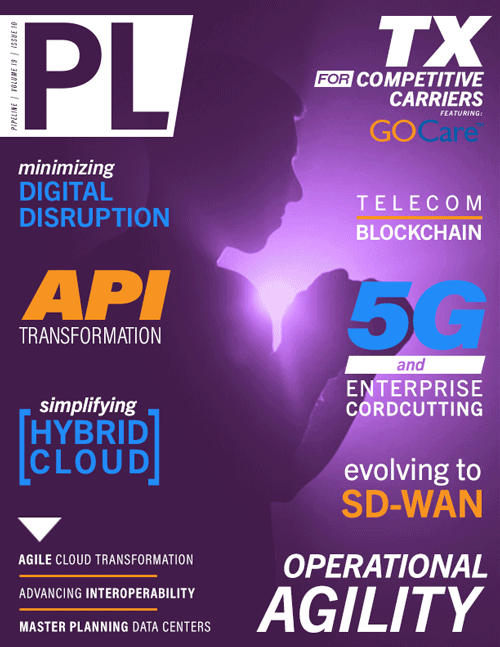Enterprises Cutting the Cord with 5G
By: Ritesh Mukherjee

Until recently, "cutting the cord" was code for removing TV channel subscriptions from your cable, satellite, or broadband provider bundle. These operators were the only option if one wanted to watch premium channels like HBO or special events like the NBA finals. The advent of streaming services like Netflix, Hulu, Disney+, and others allowed folks to get their favorite shows at much lower costs. Over time, the streaming services started adding live events and special channels to their subscriptions, making it more attractive than staying with the traditional TV channel provider. They also added exclusive shows like Stranger Things and events like Chris Rock: Selective Outrage. Providing more content enticed TV viewers to move to the streaming app. A similar phenomenon now extends to the Internet service itself, making “cutting the cord” a euphemism for ditching the wired service provider.
Since home and enterprise Internet connections became a staple, wired connections were the norm for connections. Wireless connections from satellite and WiMAX were only used in pockets. Many towns had only one wired connection provider, giving the operator a monopoly in the region. It was analogous to the scenario in which the only option to watch TV was the broadband or cable provider. Limited wireless Internet was available from some providers in unique conditions over 4G/LTE. Operators were concerned about how the performance of cell phones would be affected if they overloaded the wireless network with home or enterprise Internet connections. They avoided using the 4G/LTE network for fixed wireless access (FWA). This changed with 5G.
Operators now have ample throughputs available over the 5G network. Many homes and enterprises have moved to 5G FWA for Internet connection. Over one-third of operators now have a 5G FWA offering. There were more than 100 million FWA connections by the end of 2022, which accounted for nearly 21 percent of global mobile network data traffic. In the US, FWA services accounted for 90 percent of the net broadband additions in 2022. This phenomenon is similar to the rise of streaming apps and consumers cutting the cord. 5G FWA brings many benefits identical to new channels, shows, and consumable options that streaming apps brought. Let us examine some examples to understand why enterprises in different verticals choose 5G FWA as their Internet connection.
Education
Nearly a quarter of Americans do not have access to a broadband connection. Almost 40 percent of schools outside metropolitan areas lack broadband connections. The problem is worse in developing and underdeveloped countries, as over one-third of the world's population is offline. Many rural areas have been waiting for Internet service providers (ISPs) to deploy wired infrastructure. However, ISPs are reluctant to invest in laying cables, building towers, powering equipment, and supporting technicians as it is expensive. In many cases, even when wired broadband is available, households choose not to subscribe to it due to high costs.
5G FWA has proved to be a cost-effective solution to address the digital divide. In Texas, the Harris County Public Library system formulated a new solution utilizing funds from the Emergency Connectivity Fund (ECF) grant. They delivered 40,000 5G mobile hotspots with data plans from a leading carrier. Library patrons and students can rent these devices from one of the 26 library branches and 20 community centers. These devices have found their way into the hands of students who are using them for online learning, families who are using these to pay their bills and access telehealth, small companies who are using these to run their business, interfaith ministries who are using these devices to teach refugees, and many other use cases. A forward-looking school district in Utah, Murray City School District, used the Citizens Broadband Radio Service (CBRS) spectrum to create a private LTE network for its schools.
These deployments are examples of the impact 5G FWA has in bringing digital equity into the education sector. These solutions cannot be accomplished with a wired network. Going cordless has allowed these schools to provide essential services to communities.
Live events
Everyone who has attended an event, such as a football game or concert, knows the pains of getting good Internet access in a packed venue. Reliable connectivity is required for box office operations from food and beverage point-of-sale (POS) to live streaming. As the event is compressed into a short window, wireline services from traditional operators are often not affordable or available. Festifi works with event producers to provide Internet solutions for events. At a beer festival in downtown Denver, Festifi learned that a wireline connection would require construction and would



















